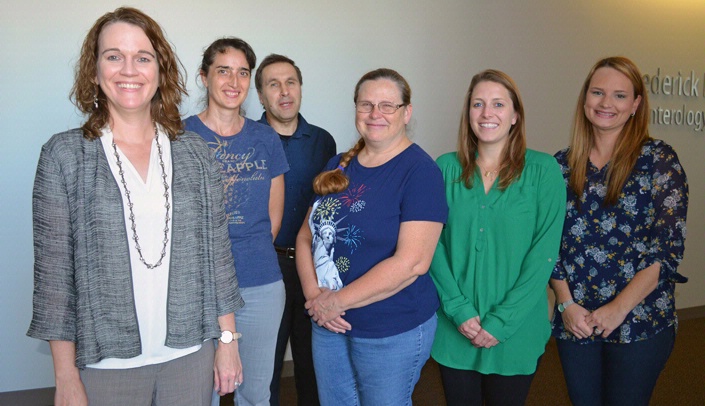We usually think of a virus as a bad thing. But Tammy Kielian, Ph.D., is exploring using one as a way to deliver gene therapy, in the search for a cure for juvenile Batten disease.
Preclinical data suggests both the delivery and the therapy are working, so far.
“This is the first demonstration of a systemic delivery route to restore CLN3 in vivo,” using the specially-engineered virus, concludes a study published by Dr. Kielian and her collaborators in a recent edition of The Journal of Neuroscience.
CLN3 is the gene that shows a mutation in juvenile Batten disease. Also known as juvenile neuronal ceroid lipofuscinosis, the disease is an inherited, autosomal recessive, fatal neurodegenerative disorder.
Juvenile Batten disease occurs in children, and is often first noticeable between ages 5 and 10. The first symptom is vision loss, followed by seizures, cognitive loss and motor decline. Finally, premature death. There are no therapeutics or cure.
It’s a rare but devastating disease.
But Dr. Kielian’s research shows, in an animal model, that the virus is an effective delivery system. It spreads through the body, even crossing the blood-brain barrier, from a single intravenous injection. And the introduction of healthy CLN3 genes into diseased cells, through the virus, “gets to the root problem,” Dr. Kielian said. It shows potential to make the cells healthy again.
When treatment is given to an animal model with juvenile Batten disease, “Motor defects are reduced. The degree of inflammation is reduced. There is reduced pathology of the lysosome,” Dr. Kielian said.
Dr. Kielian hopes the gene therapy, which has been licensed by Abeona Therapeutics, is pointed toward IND (Investigational New Drug) status. It needs one more study in the animal model to prove safety and refine the optimal dose. A Phase I clinical trial in kids could be within sight.
Dr. Kielian said her lab made it happen: “To have people like that on your side is invaluable.”
Dr. Kielian said she keeps her work going with a “quilt” of funding. That includes support from the Batten Disease Support and Research Association and a recent one-year “bridge” grant from the National Institutes of Health.
Dr. Kielian, a 2009 UNMC Distinguished Scientist for her work in Staphylococcus aureus research, first took on juvenile Batten disease just a few years ago, in 2012, when her niece, Olivia Burtwistle, was diagnosed with the disease.
Olivia and her family — Olivia’s mother is Dr. Kielian’s sister – continue to fight the disease and suffer from its effects.

Happy to see payoff for all your hard work
Good job!